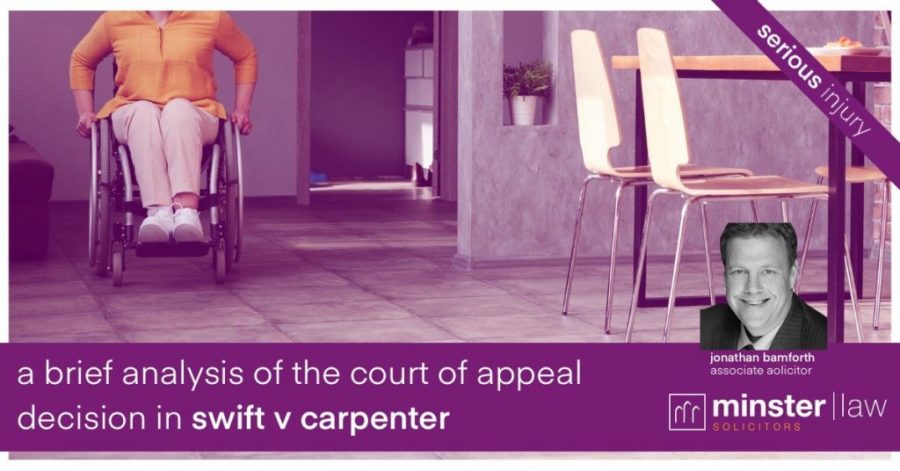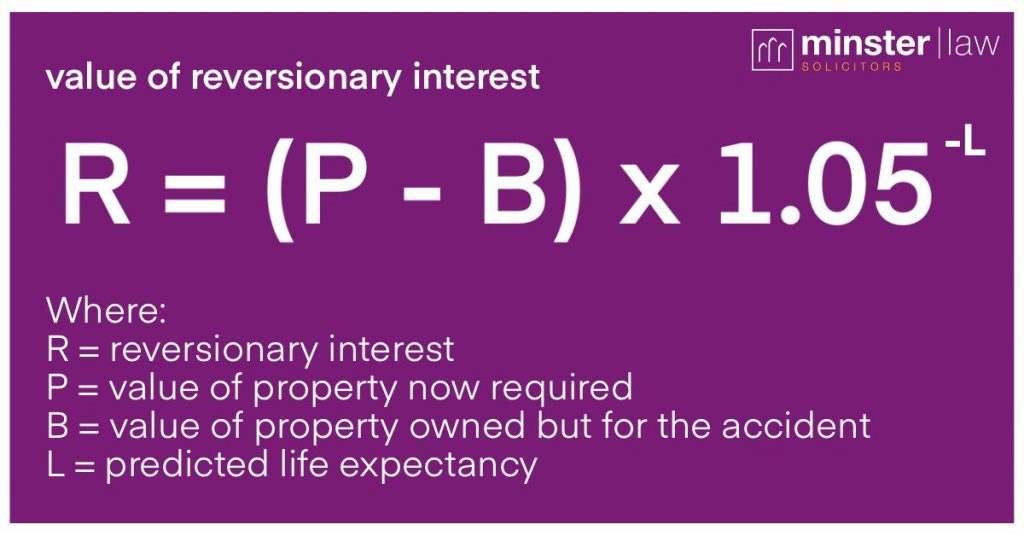
Minster Law Associate Solicitor Jonathan Bamforth provides an overview of the appeal in Swift v Carpenter and the impact it will have for claimant law firms and their clients.
Notwithstanding the indication that an application for leave to appeal to the Supreme Court has been made by the Defendants in the case, the Court of Appeal’s decision in Swift v Carpenter is a positive one for many Claimants.
In recent years, it has been difficult for Claimant lawyers to advise their most seriously injured and often vulnerable clients effectively at settlement meetings and more generally due to the uncertainty around the law relating to the compensation to be paid for suitable accommodation.
The Court of Appeal decision provides much needed clarity on the issue and to my mind, even whilst the question of an appeal to the Supreme Court is a factor; Claimants are now in a much better position than they were post the change to a negative discount rate.
As we know, one of the main issues before the Court in Swift was that of a potential windfall to the Claimant if the full capital value of suitable property was awarded in cases like this.
The question was largely how such windfall could be avoided while still ensuring the Claimant received appropriate compensation for their future accommodation needs.
The Court of Appeal were presented with a number of different arguments and concluded that the correct approach in most cases was to award the additional capital cost of suitable accommodation less the value of the reversionary interest calculated using a discount rate of 5% for life.
The calculation in Swift resulted from the additional capital cost being £900,000 with a life expectancy of 45.43 and is set out below.
£900,000 – £98,087 = £801,913
(Based on a reversionary interest calculated on £900,000 x 1.05 -45.43 = £98,087)
The calculation of the reversionary interest looks complicated but is simply the method used to calculate the ‘value’ of the reversion for life using a 5% discount rate.
As stated above, the Court of Appeal’s decision results in a balanced and fair outcome for many Claimants. In my view it cannot be said to represent an overcompensation for Claimants who will have sustained life changing and often catastrophic injuries.
Importantly though, Irwin LJ in his lead judgement specifically indicated that he felt that the approach adopted was the most appropriate one where the discount rate remains either negative or low positive and where the Claimant has a long-life expectancy.
In those cases, it is clear that he felt that the calculation above was the one to be used.
However, in cases involving older Claimants or those with a shortened life expectancy, the calculation results in a lower percentage of the additional capital cost being recovered (as was ever the case with the Roberts v Johnstone calculation) and it is clear from the comment of Underhill LJ that a different approach may be necessary in cases of short life expectancy.
There is no indication what the correct approach may be in those instances and it is to be hoped that Claimant and Defendant lawyers will work collaboratively in such cases to reach a fair outcome and thus avoid having to seek further guidance from the Court.
Receiving fair compensation is of paramount importance for all our clients, not least those who are very seriously injured and/or vulnerable, but so is ensuring that, where possible, the process does not become part of the trauma associated with the original accident.
As Claimant lawyers we must fundamentally ensure our clients receive everything they are entitled to at the conclusion of their cases but we must also try do so expeditiously and in a way that does not increase the anxiety and upset of what has already been one of the most harrowing events in their lives.
For more information on the approach Minster Law’s Serious Injury team is taking to Swift v Carpenter click here.




